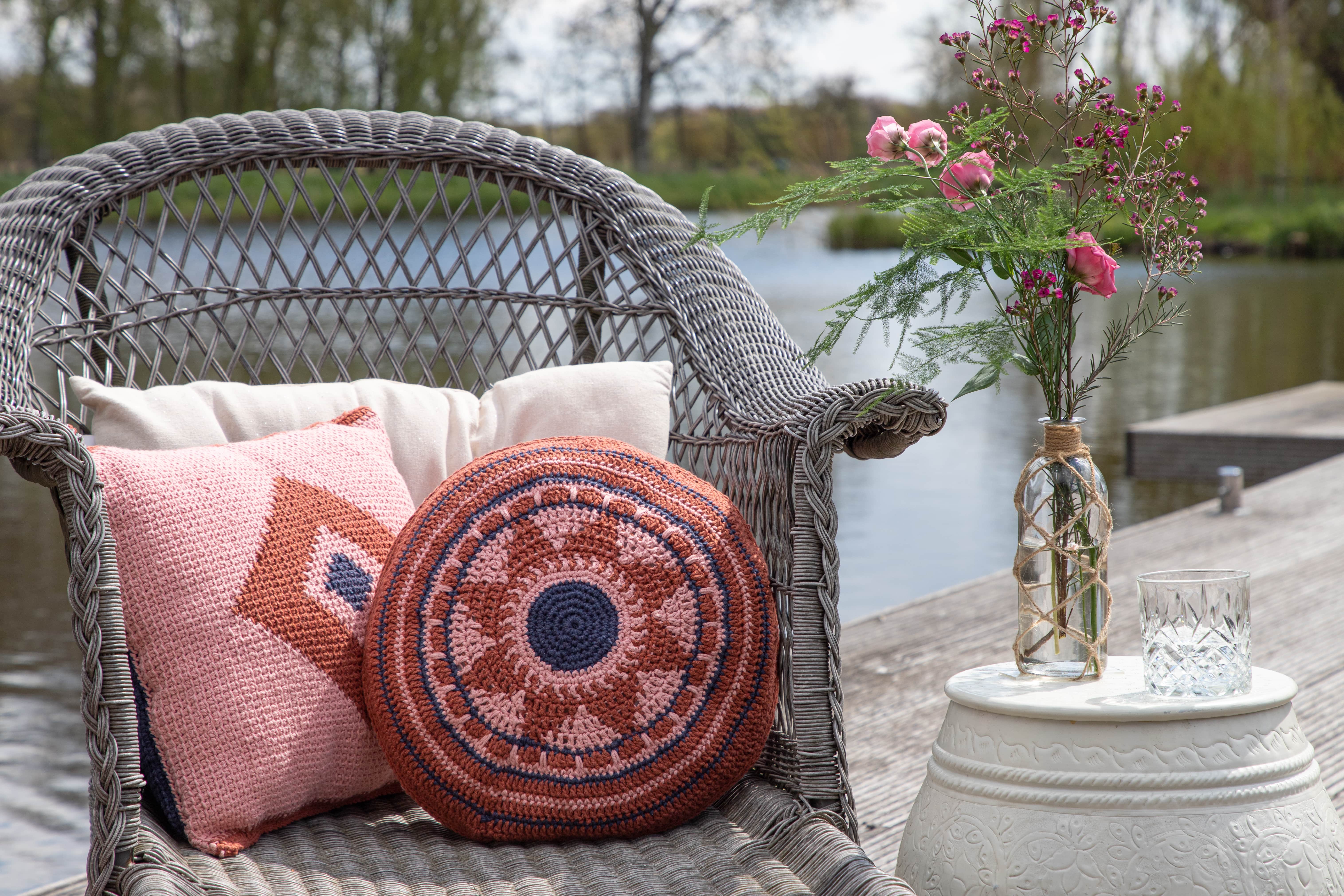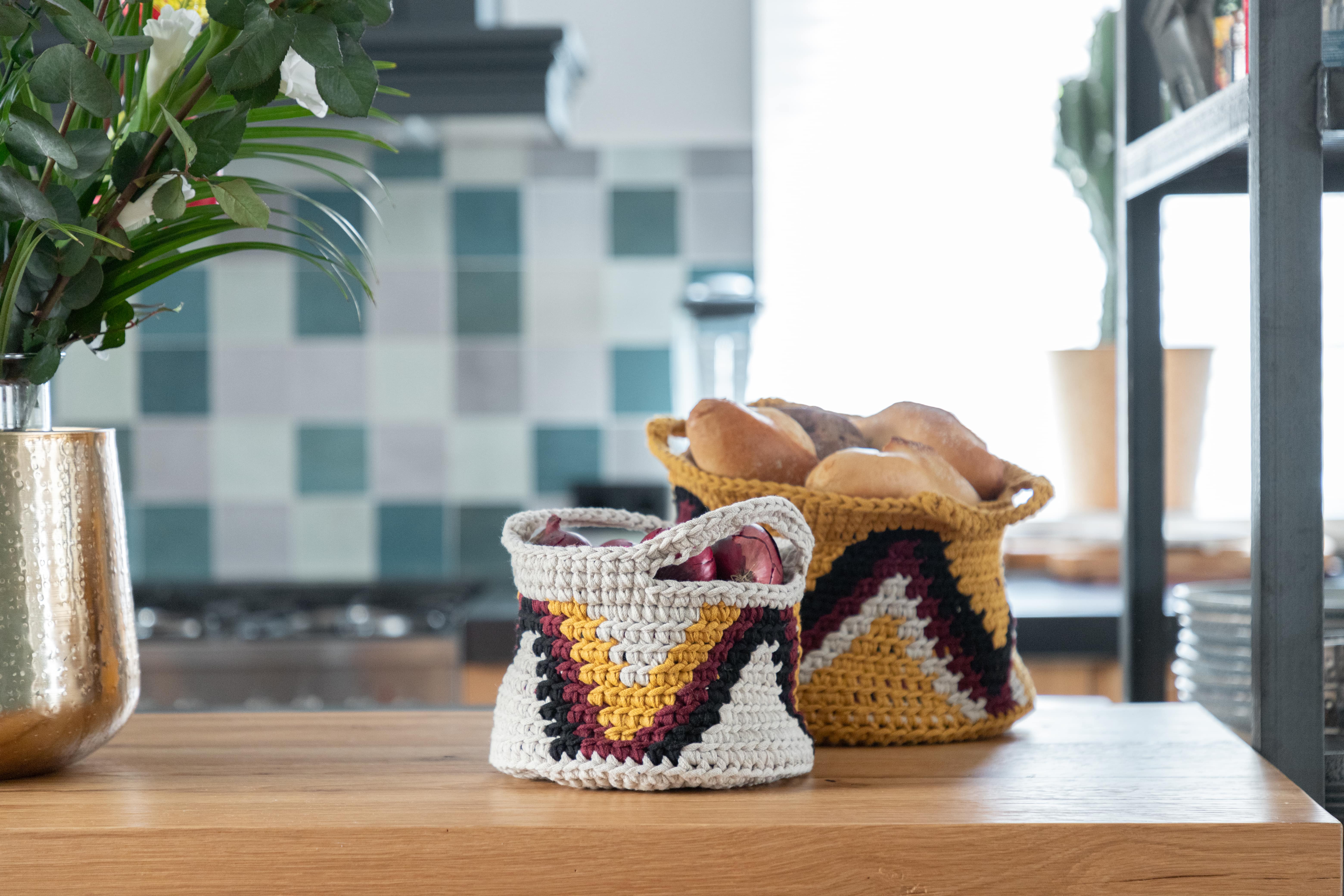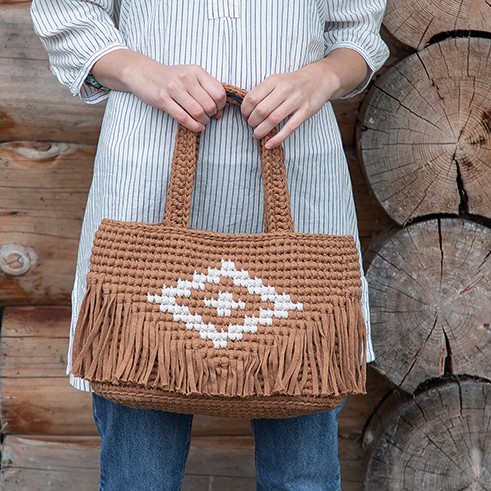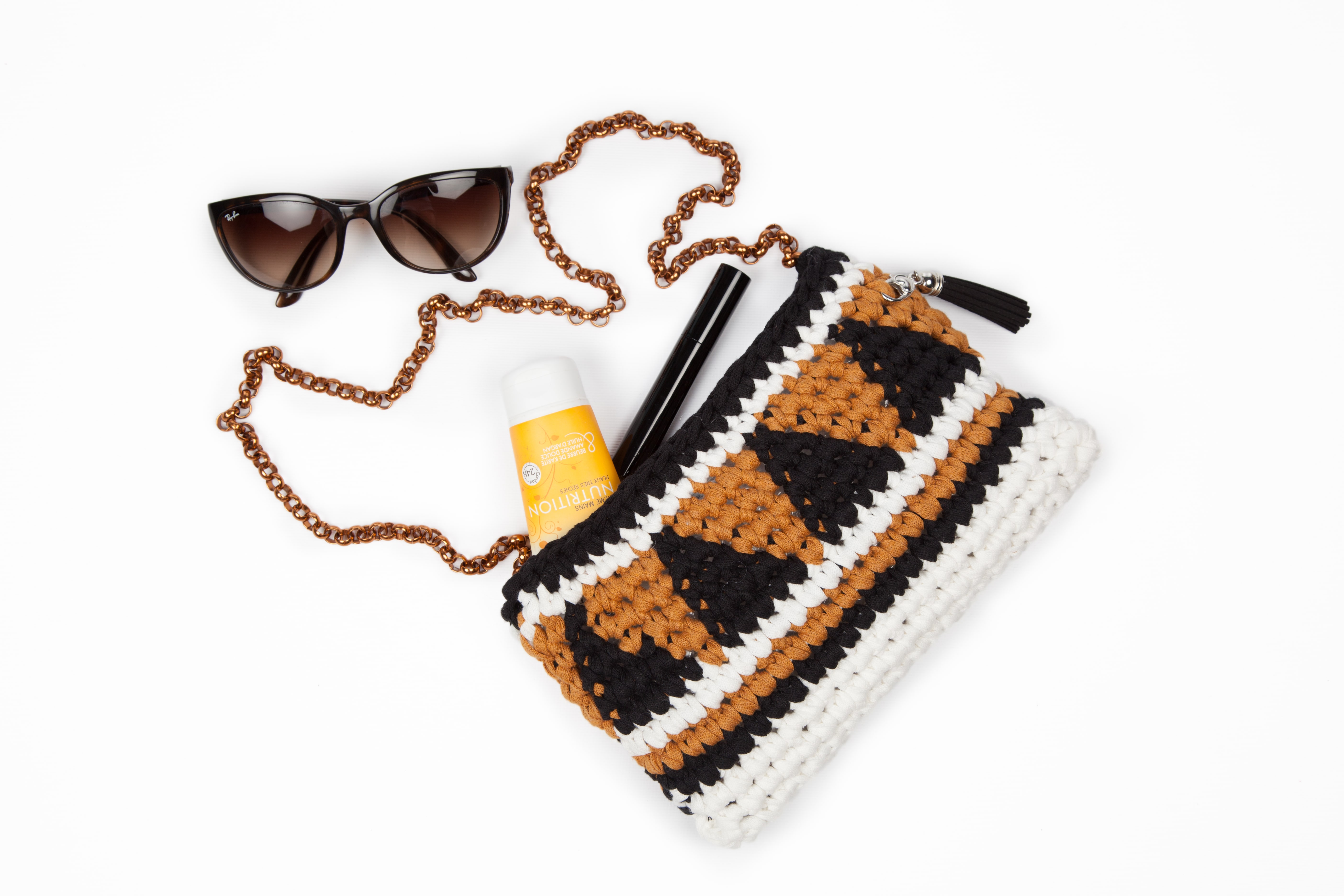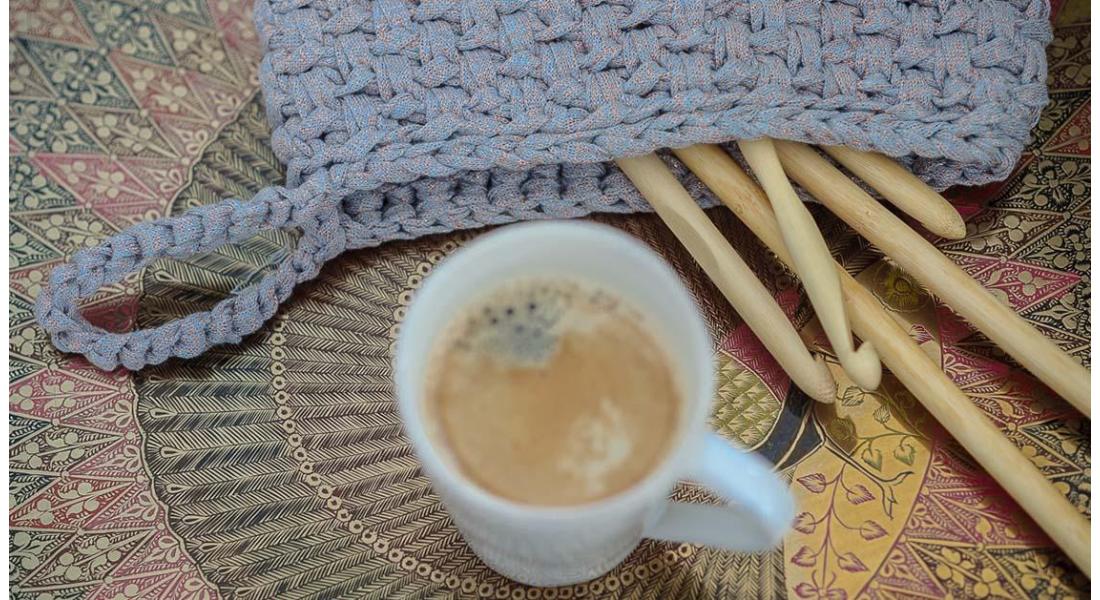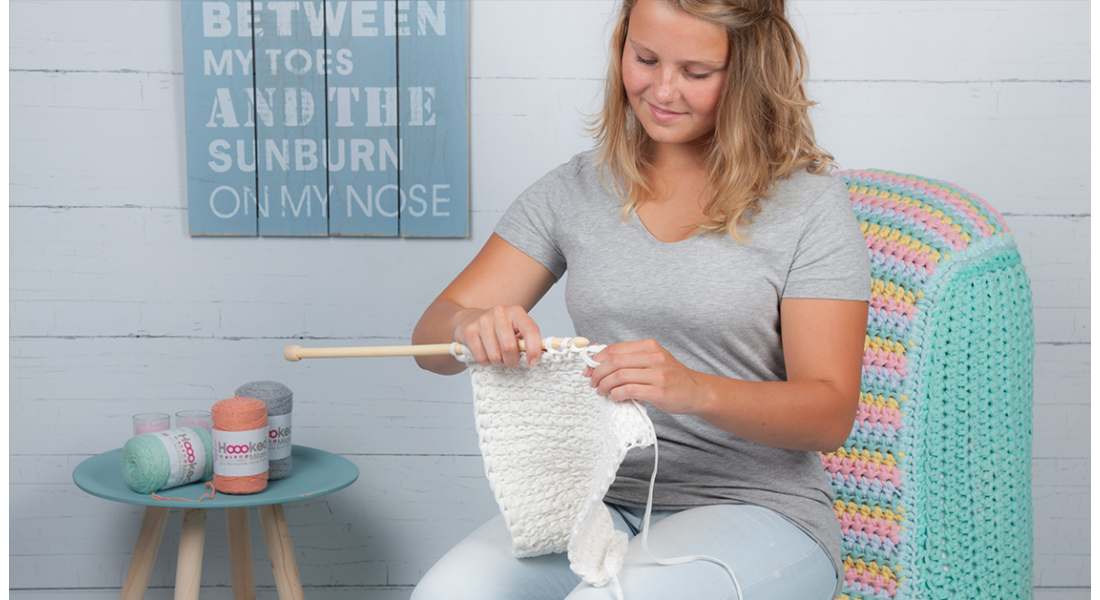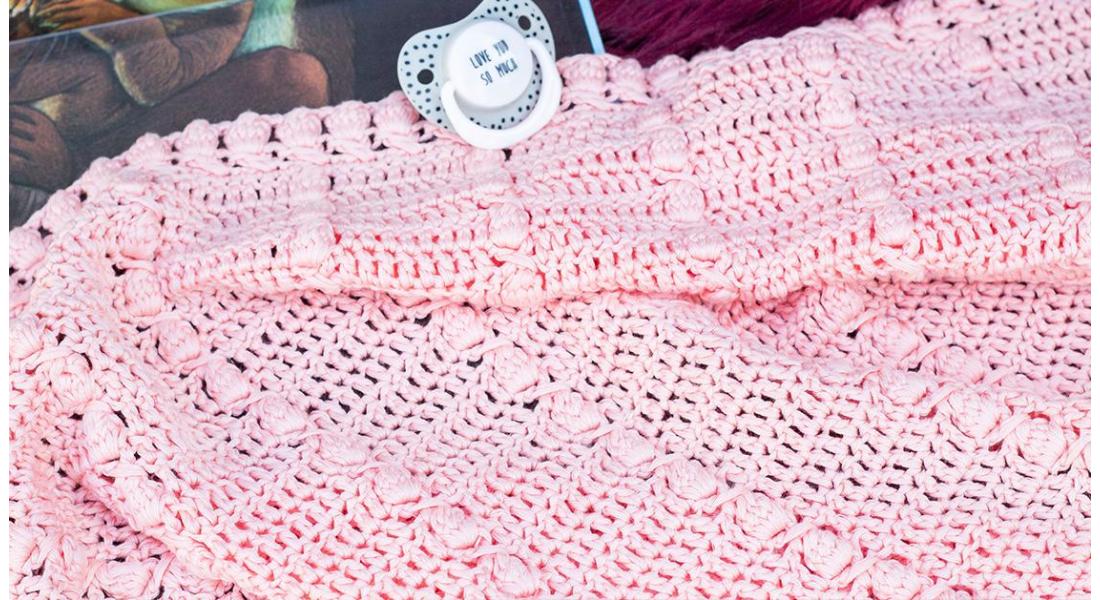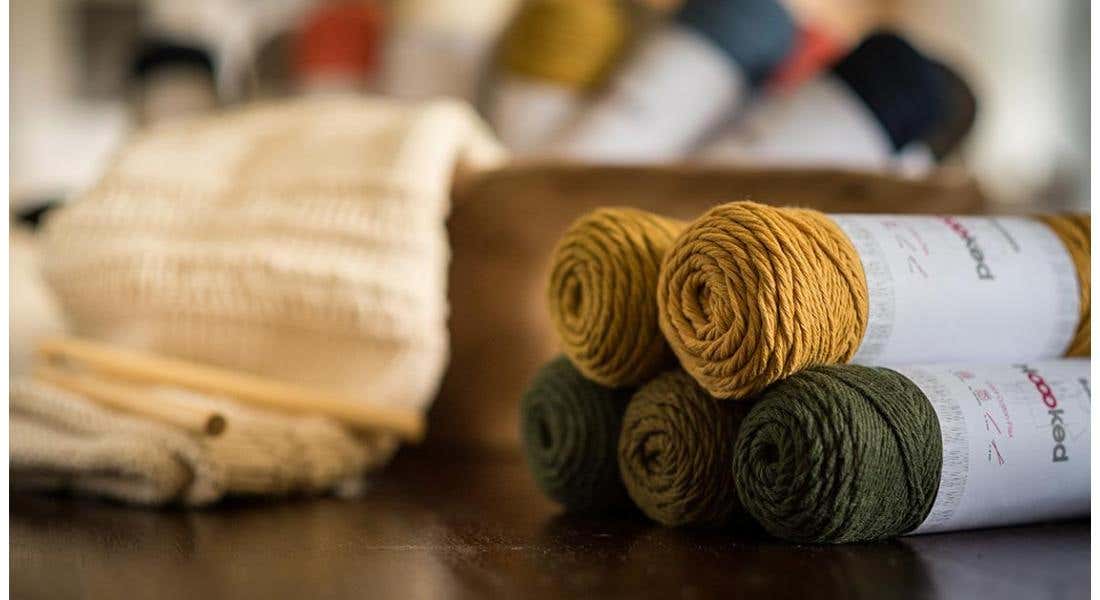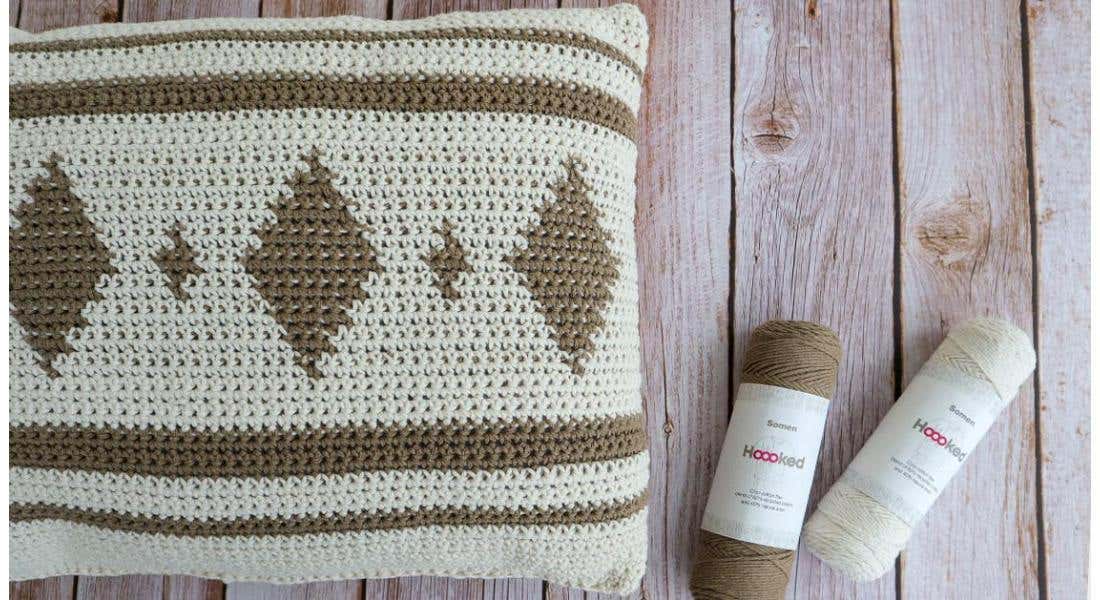
Get started with multi-coloured crochet
Once you have learned the basic stitches of crochet, it is fun to experiment with different colours in your crochet work. If you work with different colours and different yarns, it is important that the yarns you use have a similar composition and thickness (yarn weight). This way you ensure that the stitches and tension of the crochet work are more or less the same. Alternating colours can be done in different ways. We practised our colour changing techniques with a fantastic crochet Intarsia cushion pattern. The pattern was a design from British crochet designer Simone Francis, found in a crochet book we bought in 2014. We made this beautiful cushion with Somen yarn in colour Vaniglia and Somen colour Taupe, using a 4 mm crochet hook.
How does the technique of changing colour work in crochet?
You change colours when working the last yarn over the previous stitch. That is the moment you introduce the new colour. It doesn't matter if you change colours in the middle of a row or at the end. On our YouTube channel, you can watch multiple videos on how to change colours. In this video, we show you have to change colours while working dc.
Intarsia crochet
Intarsia crochet is an interesting technique to learn if you like to work with different colours. You change colour at the last yarn over of the previous stitch and continue to work in the new colour. The colour not used is left "hanging" at the back. Intarsia crochet is most often used when there are larger areas of alternative colours being used. A separate ball or spool of yarn is winded for every colour motif. To work out how much yarn you need for each colour, it is advised to test how much yarn you use for 1 motif with a test swatch. Then you can multiply by the number of motifs used in the project. Below the front and back side of an intarsia crochet swatch:
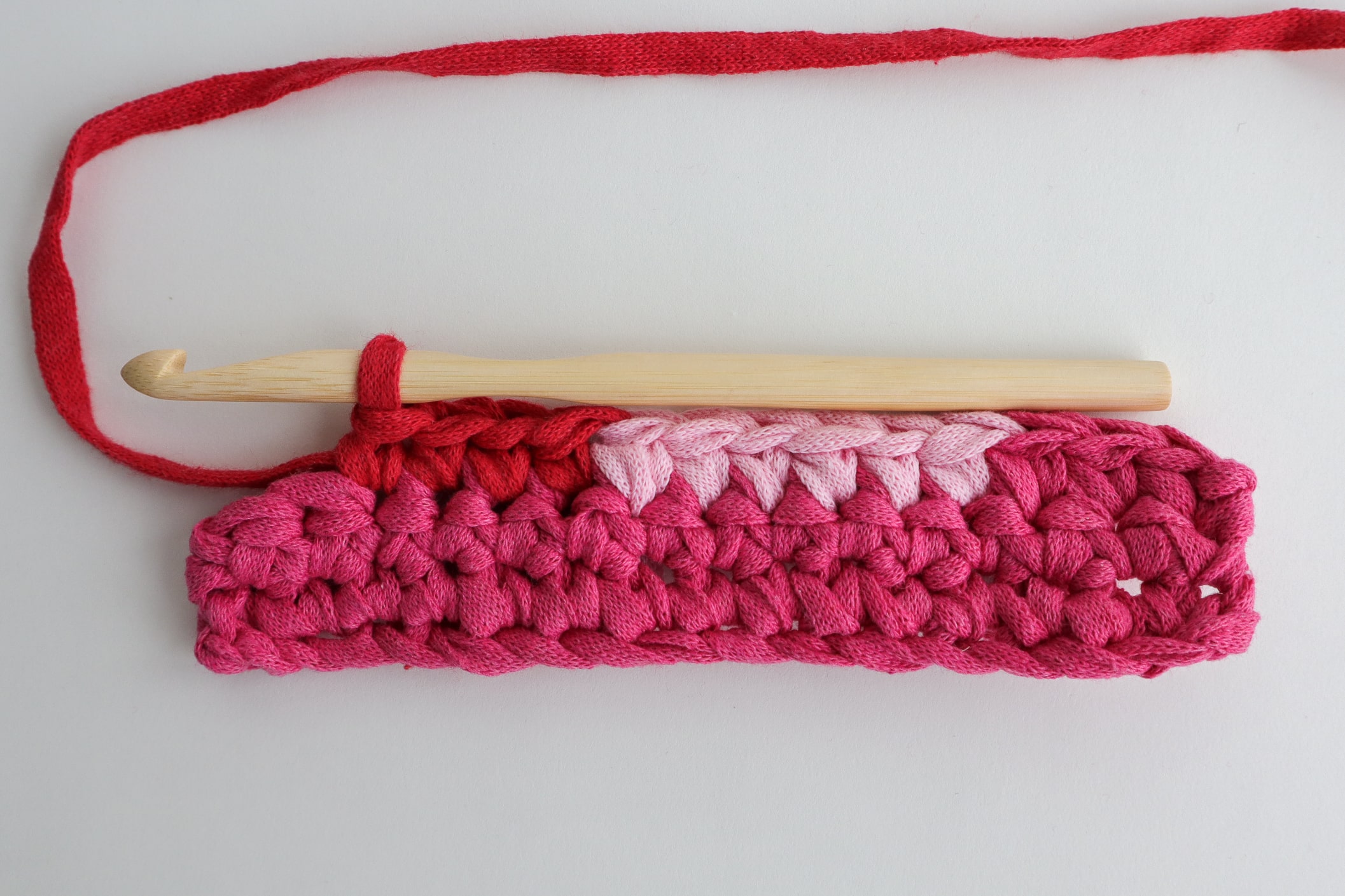

Front panel Intarsia
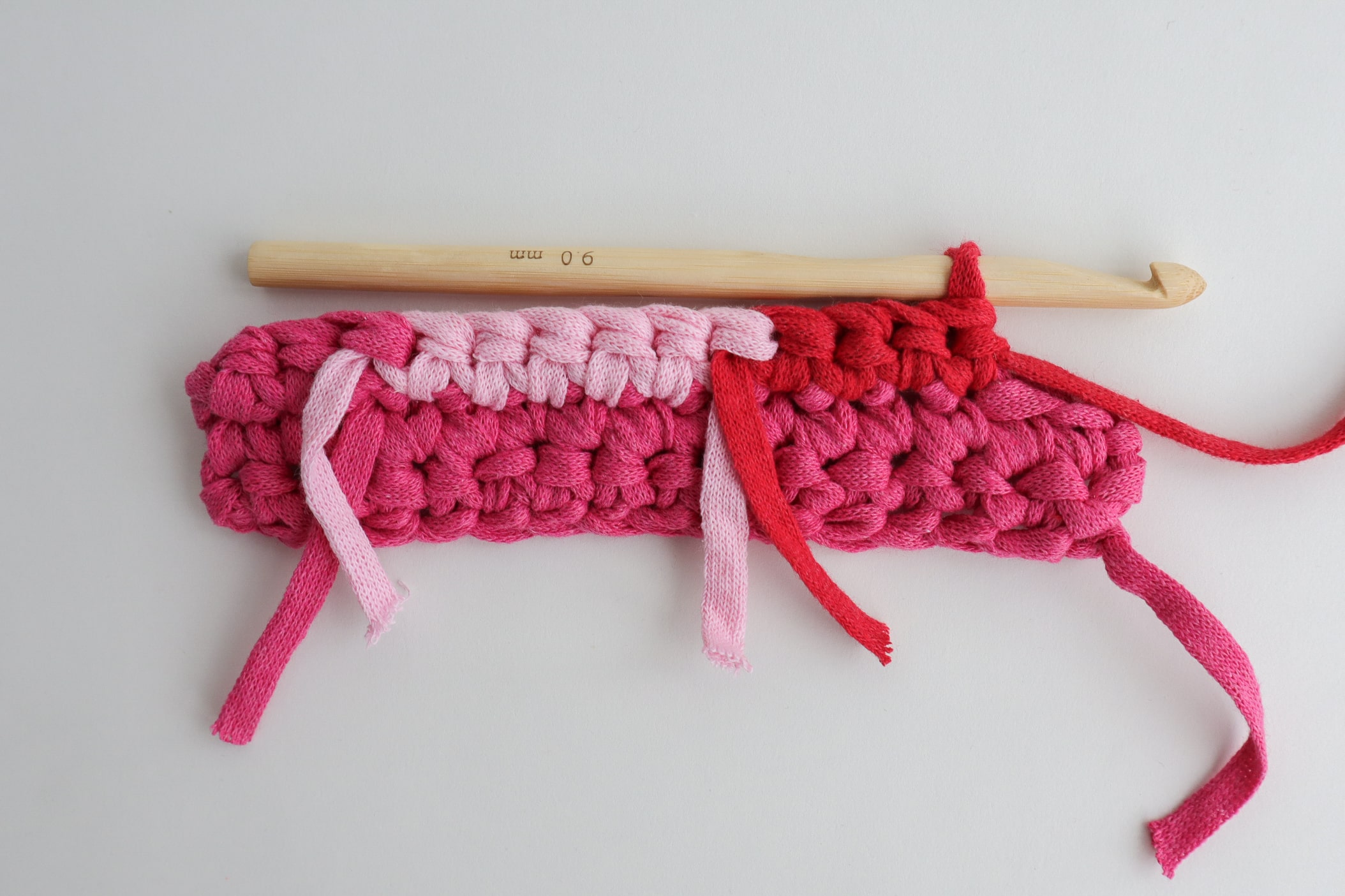

Back panel intarsia
Tapestry crochet
Using the Tapestry, also known as the Jacquard crochet technique, you can create an “invisible” colour change while taking the other colour with you and working over the yarns you are not using. This is travelling with you until you make the new colour change. The video below shows the Tapestry crochet technique and how to crochet over the unused thread:
Main differences between Tapestry and Intarsia crochet
There are a number of differences between the two crochet techniques. Below is a short overview of the most important advantages and disadvantages of Tapestry crochet versus Intarsia crochet:
1. Tapestry crochet is sturdier, because you work over the yarn that is not being used. Intarsia crochet remains much more pliable or supple.
2. Tapestry crochet does not require a lot of weaving in or sewing in ends, whereas with intarsia you will be weaving in ends on all the colour sections. When weaving in Intarsia crochet, it is important to tuck the yarn through the same colour work. This way you do not see the weave in on the right side (front) of your crochet work.
3. Tapestry crochet uses more yarn (the non-used yarn that travels with you through the crochet work). Intarsia lets you work with more precise yarn calculations and allows you to use up leftovers in your yarn stash.
Practise working with a colour chart
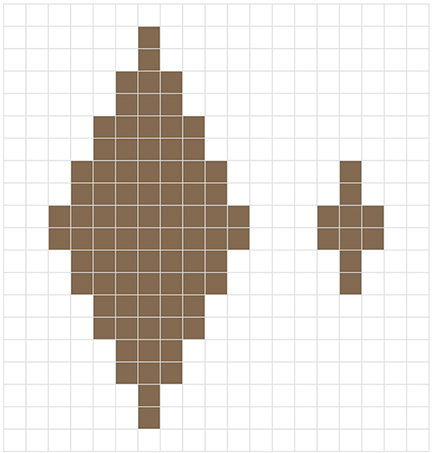

Whichever technique you choose, when making a multi-coloured pattern you usually work with a colour change. A great help to visualise the required colour changes. with a colour chart easily count your stitches and keep track of where you are. It takes some getting used to, but it works great!
You can easily make a colour chart yourself. Use checkered paper or a digital program (Microsoft Excel). You do not need a special illustrator or drawing app to get started. We have made a colour chart for a part of the cushion we made. This would make a nice test swatch (and a dishcloth)! Read the colour chart from bottom to top. This colour chart has 19 stitches and 20 rows.
You start at the bottom right and continue the 2nd row on the left. You can make the test piece with Intarsia crochet or Jacquard or with both, so that you can experience the difference yourself!
Pattern info:
The crochet book we mentioned in the intro is still available and comes highly recommended. Search online and at second-hand marketplaces (or borrow it from the library). We have only been able to find information for the Dutch and English publication.
Dutch: Handboek Haaktechnieken- 2014 – ISBN: 9789023014300.
English: Crochet, the complete step-by-step guide – 2014- ISBN 9781409334675.
The colour chart is an adaptation (part of) of Simone Francis' design for this crochet book. Simone is a very active and inspired DIY designer in the field of crochet and knitting with her own pattern shop on Ravelry. Definitely, a good place to look for more inspiration.
Want to practise Intarsia crochet?
Geometric shapes
Cushion Ariana is a challenging crochet project made by Dutch crochet designer Puur Creatief. The cushion is worked with Eco Barbante and suitable for advanced level crochet lovers.
Tapestry crochet baskets
Fun and practical crochet project with RibbonXL by the lovely Samanta from Follow the Crochet. The colour can be adapted to suit your own taste.
Diamond shape bag design
Japanese crochet designer Gemelli, made this fashionable crochet bag with RibbonXL. The pattern is very clear and is the bag is worked with double crochet.
Free pattern festival bag
The rock steady clutch is a fun project to crochet if you already know the basics of crochet and want to learn to work with a colour chart. This clutch is easy to create with a bunch of RibbonXL yarn leftovers.
Read more about Hoooked
If you want to read more about knitting and crocheting with Hoooked yarns, then don't miss out on these blogs:
1. What is the surface area you can knit or crochet from 1 bobbin Hoooked yarn?
2. Somen: A cool and airy yarn from recycled cotton with flax (linen).
3. Sustainable plant-based yarns.
 EU: Free Shipping above €99
EU: Free Shipping above €99 Great customer care
Great customer care

